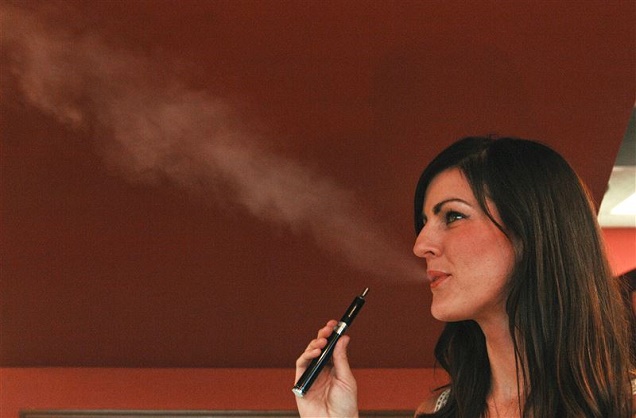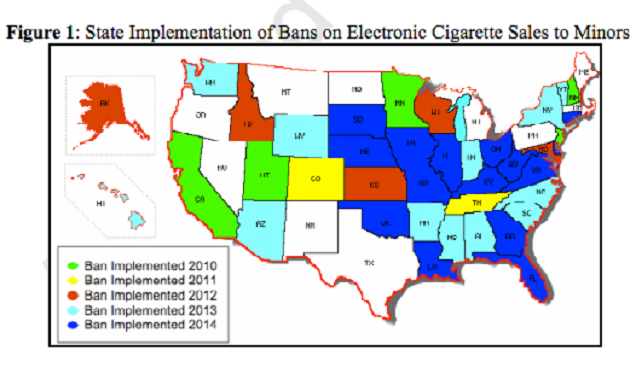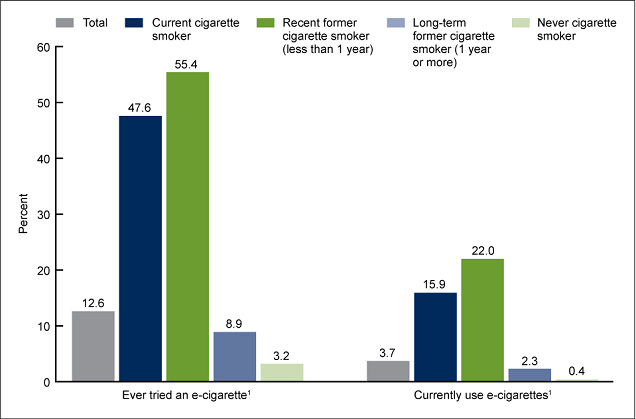
With more stirrings about the FDA’s e-cig regulation, explosions, changes to the rules about taking e-cigarettes on planes, claims that e-cigarettes encourage heavy drinking, more explosions, and the executive director of the American Lung Association insinuating that e-cigs would have to be safer than air for indoor vaping to be acceptable, it’s been an interesting seven days, to say the least. Here’s the Week in Vaping.
E-Cigarette Research
With a headline saying that e-cigarettes “encourage excess alcohol consumption, study claims,” you know you’re in for an exaggerated look at what the study in question found. The research aimed to determine whether the same relationship between alcohol and drinking – smokers being more likely to drink – exists for vapers too. And the “no shit, Sherlock” finding is what they got: drinkers were more likely to vape and vapers were more likely to drink.
Christopher Snowdon underlines how obvious the result was:
You don't need to do the research to hypothesise that e-cigarette users are more likely to be addicted to alcohol. I'll bet you that they are also more likely to gamble, take drugs and be promiscuous. How do I know? Because smokers are more likely to do all those things, and vapers are the same people. The smoking doesn't cause these behaviours, however, and nor does the vaping. The underlying mechanisms are personality type and risk tolerance.
A study from last week – which we missed previously – has found that bans on vaping for under 18s result in increases in smoking. The researcher compared states that had established a minimum age for vaping with those that hadn’t, and although smoking rates were still going down, banning vaping for minors reduced the speed of the decline, leading to a 0.9 percentage point increase in recent smoking (compared to states without a ban).

The study doesn’t definitively establish cause and effect but it’s obviously fairly likely, although Michael Siegel points out that it would have been more informative if it had looked at the actual rates of vaping, rather than just assuming less vaping on the basis of bans.
New CDC data has been released on adult vaping in the US in 2014, finding that 22 percent of recent former smokers were current vapers, strongly suggesting they’d quit smoking by vaping. Only 3.2 percent of never-smokers had tried an e-cig, and they were most likely to be used by smokers trying to quit.

Data from the Alaska Youth Risk Behavior Survey, presented this week, showed that more Alaska high school students had vaped in the past month than had smoked – 18 percent vs. 11 percent. Of course, other evidence shows that use in the past month primarily means “used once or twice” when it comes to vaping, so this survey probably doesn’t mean that regular smoking is more common than regular vaping.
Regulations, Legislation and Vaping Bans
CASAA has issued a National Call to Action about the FDA e-cig regulations, which are currently being reviewed by the Office of Management and Budget, with tens of thousands of vapers calling the White House this week to ask President Obama to demand that the FDA reconsider the proposed regulations, on the grounds that they will remove almost all e-cigarettes from the market.
The Tobacco Vapor Electronic Cigarette Association claimed to have a draft copy of the deeming regulations, but despite promises, never released anything other than a table of contents, and this appeared to be from a 2014 document. Their claims to have access have not been substantiated, and the FDA has said that it does not share documents still under review, and that it cannot confirm if the version they claim to have is the most recent, or even if it’s authentic.

A new federal rule has also banned people from flying with e-cigarettes in their checked baggage to protect against fires, but you can still take them in your carry-on baggage, as long as you don’t charge them (or vape) while you fly.
The Vaping Giraffe has a great post on the situation for vapers in Norway. Government parties claimed this week that they wanted to make it legal to sell nicotine-containing e-liquid (with only nicotine-free options currently being legal), and spoke about the harm reduction potential of e-cigarettes, but it was sadly just an underhanded attempt to implement the EU’s tobacco products directive. However, a major newspaper has called this tactic out, and hopefully thing will improve for Norwegian vapers soon.
General Vaping News and Blog Posts
Clive Bates published a fantastic new post on a back-and-forth between NY Times columnist Joe Nocera and Matt Myers of the Campaign for Tobacco Free Kids, where Nocera invited the tobacco control community – and Myers by name – to come up with a way to maximize the benefits of e-cigs, rather than just complaining about hypothetical risks all the time.
Myers offers a pathetic response by letter, and Bates’ post revolves around 10 ways he could have improved that letter. Bates’ comments can be pretty much summed up as: by telling the whole truth, rather than just the bits that support your agenda.
The UK NHS has updated its guidance on e-cigarettes, offering evidence-based advice for smokers looking to quit, following on from the Public Health England report by stressing that vaping is likely 95 % safer than smoking, and does appear to help smokers quit.
The American Academy of Pediatrics has released recommendations on e-cigarettes and tobacco cigarettes, which include suggestions to ban flavored products that are “particularly attractive” to youth, to raise the purchase age to 21, to include e-cigs in smoking bans (second hand-vapor contains “significant amounts of nicotine,” according to the AAP, but not to anyone willing to do the math based on the evidence). It’s full of the standard anti-vaping hysteria, and may have gotten Bullshit of the Week on a less bullshit-filled week.
An e-cig burst into flames on a flight to Kuala Lumpur this week, with the man in question suffering burns but the flight crew managing to control the fire quickly enough to prevent major issues and the flight landed safely. There has also been another explosion in Florida, where a man’s e-cig exploded in his face, and he has been put into a medically induced coma so he doesn’t have to go through the pain.
Simon Clark, of the Smoker’s rights group Forest, has written an interesting blog post about vaping, smoking and “playing politics.” Clark criticizes the vaping community for failing to condemn outdoor smoking bans, and for only putting forward the argument that banning teen smokers from vaping might not be too good an idea after the release of the recent research, even though it’s been obviously right all along. He says vapers are “playing politics,” and really, I agree with him. Whether we need to or not is another matter.
A few e-liquid brands – Alchemy e-Lixirs, Virgin Vapor and Orb Vapor – have been the subject of legal action in Washington because of their unsubstantiated claims that their e-liquids are organic. All of the companies failed to obtain certification – as is required by law – but Orb Vapor has stopped advertising it’s juice as organic, and Virgin Vapor is now completing the certification process, after some tweaks to the juices.
Bullshit of the Week – E-Cigarette Threaten Public Health Advances

After a genuinely interesting and quite reasonable report on diacetyl in e-liquid last week, the Milwaukee Journal Sentinel has taken a severe nosedive into bullshit territory with an editorial entitled “Increased use of e-cigarettes threatens public health advances” from Linda Witucki, the executive director of the American Lung Association.
The piece claims that e-cigarette manufacturers have claimed “without proof” that vaping is safer than smoking, and makes the classic point about this being a “low bar” anyway. Witucki then adds that “the Journal Sentinel findings correctly question the credibility of even that minimal claim.”
The claim that the presence of diacetyl and acetyl propionyl, in vastly lower quantities than in cigarette smoke, calls the idea that vaping is safer than smoking into question is laughable. It would only be true in a world where it was the flavorings – you know, rather than the carcinogen-laden tar and combustion products – that caused cigarettes to be so dangerous.
She then asks, “So why add the flavorings at all?” before launching into unsubstantiated hypothesizing about – you guessed it – how flavors are all a secret ploy to trap otherwise non-smoking youth into nicotine addiction for the rest of their lives.
This basically explains what she thinks, and hits on a core part of the anti-vaping narrative:
Enticed by candy and fruit flavorings, as well as the industry's messaging that e-cigarette use is “safe,” these products have found their way into the hearts, mouths and backpacks of middle and high school students everywhere. Their colorful flavorings, packings and designs also serve to fool unsuspecting adults into thinking they are either candy or pens.
This would all be silly enough, but the youth appeal thing is a well-worn claim.
What comes later, however, is mind-boggling:
When it comes to smoke-free air, the question is not whether secondhand e-cigarette emissions are safer than secondhand smoke from cigarettes, but rather, are those emissions safer than clean air? The answer is unequivocally no.
Why the hell would they have to be safer than clean air?
She is apparently arguing that e-cigarettes would need to actually remove some of the dangerous chemicals already present (in small quantities) in “clean” air in order for vaping in public to be OK. She then says the answer is “no” as if that would be a surprise to anybody actually capable of reading the face-palm-inducing sentence she just wrote.
Check Back Next Week for More!
It’s been a busy week, to say the least. As always, we’ve tried to include all of the relevant (and not boring) stories we can, but if we’ve missed anything good, let us know in the comments! And if not, check back next week for more!

